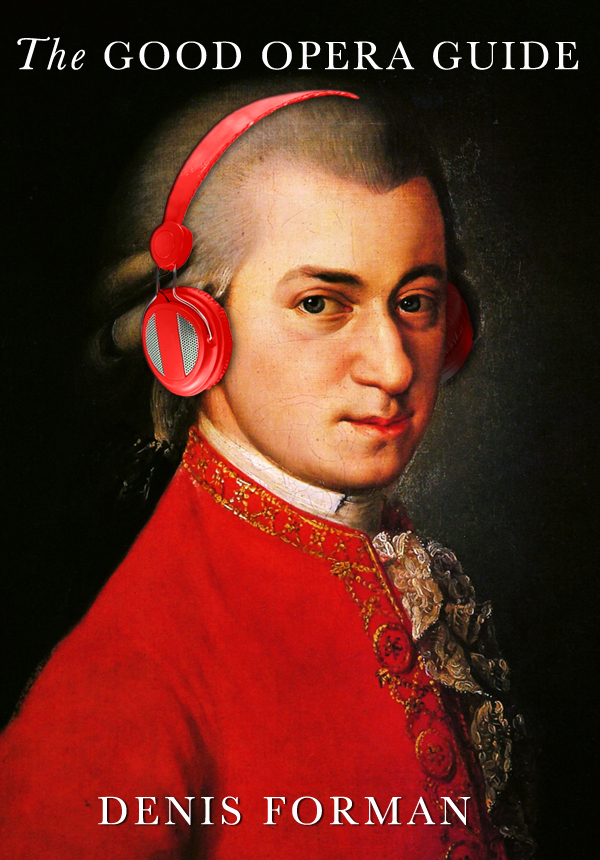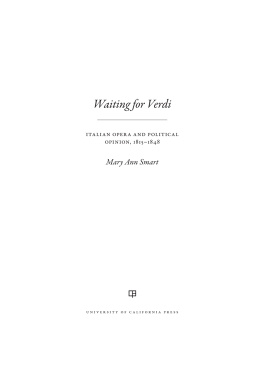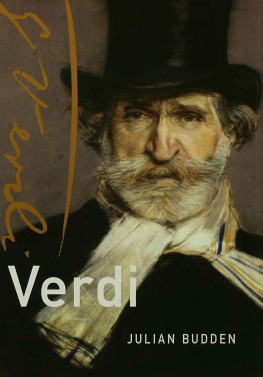
The Good Opera Guide
An Irreverent Guide to the Plots, the Singers, the Composers, the Recordings
Denis Forman
All rights reserved, including without limitation the right to reproduce this ebook or any portion thereof in any form or by any means, whether electronic or mechanical, now known or hereinafter invented, without the express written permission of the publisher.
Copyright 1994 by Denis Forman
First published in the UK by Weidenfeld & Nicolson, 1994
ISBN 978-1-4804-5028-8
Published in 2013 by BSB
6 Bayley Street
Bedford Square
London WC1B 3HE
www.bedfordsquarebooks.com

Distributed in 2013 by Open Road Distribution
345 Hudson Street
New York, NY 10014
www.openroadmedia.com

To Moni
Contents
ANGELICA, SUOR
(Sister Angelica) |
UN BALLO IN MASCHERA
(A Masked Ball) |
CAVALLERIA RUSTICANA
(A matter of honour) |
LA CENERENTOLA
(Cinderella) |
LA CLEMENZA DI TITO
(Tito the Magnanimous) |
COS FAN TUTTE
(Never trust a woman) |
DREIGROSCHENOPER, DIE
(The Threepenny Opera) |
LELISIR DAMORE
(The love potion) |
ENTFUHRUNG AUS DEM SERAIL, DIE
(The Escape from the Seraglio) |
LA FANCIULLA DEL WEST
(The Girl of the Golden West) |
LA FORZA DEL DESTINO
(The Force of Destiny) |
LA GIOCONDA
(The Street Singer) |
GTTERDMMERUNG
(The Twilight of the Gods) |
LITALIANA IN ALGERI
(The Italian Girl) |
MARIA STUARDA
(Mary Stuart) |
I PAGLIACCI
(The Comedians) |
PCHEURS DE PERLES, LES
(The Pearl Fishers) |
I PURITANI
(The Puritans) |
Gtterdmmerung
(The Twilight of the Gods) |
LA RONDINE
(The Swallow) |
IL SERAGLIO
(The Escape from the Seraglio) |
LA SONNAMBULA
(The Sleepwalker) |
SUOR ANGELICA
(Sister Angelica) |
IL TABARRO
(The Cloak) |
TITO, LA CLEMENZA DI
(Tito the Magnanimous) |
LA TRAVIATA
(The Fallen Woman) |
IL TROVATORE
(The Troubadour) |
I VESPRI SICILIANI
(The Sicilian Vespers) |
ZAUBERFLTE, DIE
(The Magic Flute) |
How to use this guide
The operas in this guide are those that have passed the simple popularity test of having three or more versions listed in the Gramophone CD catalogue of December 1992. The temptation to let in some outstanding outsiders (Peter Grimes) and to chuck out some of the weaker qualifiers (Lakm) has been resisted, with difficulty. Every one of the 83 operas is a guaranteed three-entry item.
Proper names are used in the form that comes most naturally. Opera people tend to talk of Meistersinger, The Flute, Lucia, not The Mas-tersingers, Zauberflte or Lucy. Every opera has its proper title in its own language at the head of each entry.
The same principle spreads far and wide throughout the guide. In some operas the names of some of the cast are anglicized, others are left in German, Italian or whatever. This may seem odd but it is done to fall in with common usage and anyway consistency is the hobgoblin of small minds. In the cast list after the title on the first page the names are given in both languages except in those operas2 out of 83!where the opera is in English anyway. Accents, umlauts, circumflexes and cedillas are commonly done away with unless they are needed as a guide to pronunciation. A good deal of dog-Italian occurs and even the English language is treated with scant respect.
Throughout the guide Acts are ActsI, II, III, IV and in extreme cases V. After Scene 1 (Sc 1) scenes are only newly numbered as scenes (Sc 2) where there is a change of scenery. This may seem arbitrary and sometimes goes against the book. But when you get at one end of the spectrum an early opera giving every aria a fresh scene number and at the other end 2 hours 40 minutes of continuous music in Rhinegold broken into only four scenes, you have to give the word scene some sort of common meaning. Anyway thats it.
The LOOK OUT FOR section which comes after the telling of the story in the opera section is designed for the armchair listener (or for the listener who sits at a table or lies on the floor, and why should all listeners chairs have arms anyway?) in order to alert them to look out for the best bits, to give them some idea of what is going on simultaneously both in the music and on stage, and thereby take them an inch or two nearer to the experience of actually being in the opera house. Timings are approximate and must be since they can vary greatly between different performances. The slowest Tristan in the records at Bayreuth played for THIRTY MINUTES longer than the most speedy.
Stars are awarded at the whim of the author as follows:
* Worth looking out for
** This is really good
*** Stunning. Brilliant
At the end of the COMMENT in the opera section each opera is given a rating from alpha-plus to gamma. Authors whim again, and whereas no reader is likely to want to swap any of the gammas with the alphas, these ratings are susceptible to a wide range of disagreement. But what the hell. Everyone their own opera critic.
The aim of the guide is to avoid every technical term in music that can be described in plain English, but there are some basic truths which have to be tackled by anyone who wants to get a fix on certain musical forms (aria) or on basic musical structure (tonality). These are dealt with in a summary fashion in the Words list and more fully in the Operatica section. Would true musicologists please look the other way.
The Artists section includes some sixty conductors and singers, again selected on whim, but with three criteria in mind:
- They must be world class.
- They must be household names. (At least in households that are opera-prone.)
- They must be well represented on disc.
THE OPERAS
| Adriana Lecouvreur | Backstage tragedy |
| Cilea |
The one about the star of stage and screen whose rival sends her a bouquet of poison gas violets. She sniffs it: snuffs it.
| CAST |
| Adriana Lecouvreur, star of the Comdie-Franaise | Soprano |
| Michonnet, stage manager of the Comdie | Baritone |
| Prince of Bouillon, opera-going prince | Bass |
| Princess of Bouillon, his wife | Mezzo |
| Abb of Chazeuil, his companion and social fixer | Tenor |
| Maurizio, Count of Saxony | Tenor |
| Actors, servants, etc. |
| 4 acts: running time 2 hrs 5 mins |
STORY
Act I Backstage in the Comdie-Franaise
We are waiting for curtain up on one of Racines smash hits in Paris France 1730. Backstage it is all go: final touches to costume and make-up: a heavy demand for beauty spots etc.: distracted stage manager Michonnet urges everyone to hurry up: the Prince arrives plus his sidekick the Abb seeking his good friend star actress Duclos: Duclos is not available. Rival star Adriana comes on spouting Racine like mad. Poncey pair offer her fatuous compliments. She says come off it I am a humble working actress and the only good guy here amongst you phoneys is Michonnet (M. is very chuffed). All go on stage.










